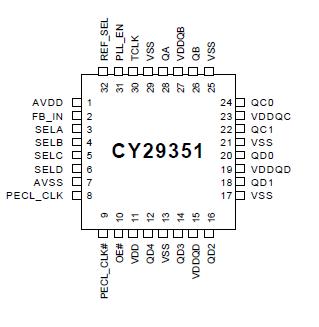CY29351: Features: • Output frequency range: 25 MHz to 200 MHz• Input frequency range: 25 MHz to 200 MHz• 2.5V or 3.3V operation• Split 2.5V/3.3V outputs• ±2.5% max Output duty ...
floor Price/Ceiling Price
- Part Number:
- CY29351
- Supply Ability:
- 5000
Price Break
- Qty
- 1~5000
- Unit Price
- Negotiable
- Processing time
- 15 Days
SeekIC Buyer Protection PLUS - newly updated for 2013!
- Escrow Protection.
- Guaranteed refunds.
- Secure payments.
- Learn more >>
Month Sales
268 Transactions
Payment Methods
All payment methods are secure and covered by SeekIC Buyer Protection PLUS.

 CY29351 Data Sheet
CY29351 Data Sheet








